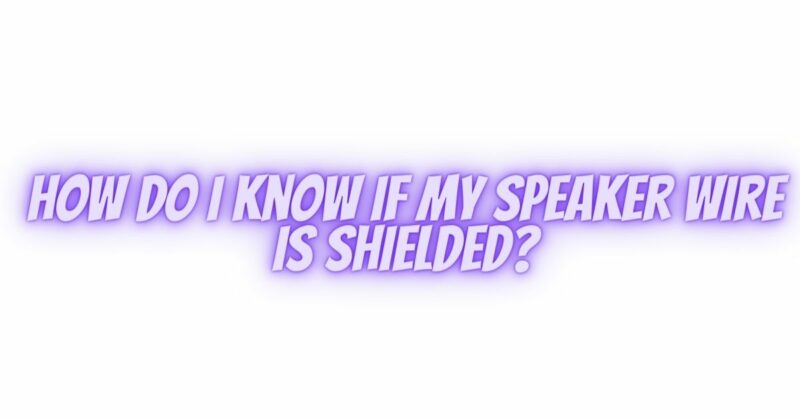Determining whether your speaker wire is shielded or unshielded is essential for maintaining audio signal integrity and preventing interference in your audio system. Shielded speaker cables are designed to minimize electromagnetic interference (EMI) and radiofrequency interference (RFI), making them suitable for various audio applications. In this guide, we’ll explore how to identify shielded speaker cables and understand their characteristics.
Visual Inspection
The easiest way to determine if your speaker wire is shielded is through a visual inspection. Here are some visual cues to look for:
- Shielding Material: Shielded speaker cables typically have an additional layer of shielding material around the internal conductors. This shielding layer is often made of metal, such as aluminum or copper. Inspect the cable closely to see if it has a metallic layer or foil wrapping.
- Color and Appearance: Shielded cables may have a distinct appearance due to the presence of the shielding layer. The shielding layer is often silver or gray in color and can be seen beneath the outer insulation. Unshielded speaker cables may have a simpler appearance with only the insulated conductors visible.
- Labeling: Some shielded cables are labeled as “shielded” or may have markings indicating their shielding properties. Look for any labels or markings on the cable jacket that provide information about its construction.
Conductivity Test
You can also perform a simple conductivity test to check if your speaker wire is shielded:
- Expose the Shielding: Carefully strip back a small section of the cable’s outer insulation to expose the inner conductors and the shielding layer (if present).
- Use a Multimeter: Set a multimeter to measure resistance (ohms) and ensure it is properly calibrated.
- Test the Shielding: Touch one multimeter probe to the exposed shielding layer and the other probe to the cable’s ground wire or connector. If the multimeter registers a low resistance value, it indicates that the shielding layer is conductive, confirming that the cable is shielded.
Check Manufacturer Documentation
If you have access to the manufacturer’s documentation or product specifications for your speaker cable, review this information. Manufacturer documentation often includes details about the cable’s construction, including whether it is shielded or unshielded.
Seek Professional Advice
If you are unsure about the shielding properties of your speaker cable, consider seeking advice from an audio professional or technician. They can help you identify the cable type and recommend suitable cables based on your audio system’s requirements.
Why Shielded Speaker Cables?
Shielded speaker cables are preferred in scenarios where interference from electromagnetic or radiofrequency sources is a concern. Common applications include:
- Home theater systems
- Recording studios
- Professional audio setups
- Environments with high EMI/RFI levels
Using shielded speaker cables in these situations helps maintain audio signal quality and prevents unwanted noise or interference from degrading your audio experience.
In conclusion, identifying shielded speaker cables involves visual inspection, conductivity testing, and checking manufacturer documentation. Choosing the right cable type for your audio system ensures optimal signal integrity and audio quality, especially in environments prone to interference.

